The highly anticipated Kia Tasman dual-cab ute has made a confident entry into the Australian market, along with a five-star safety rating from ANCAP. This milestone is a significant win for Kia, as the Tasman is the brand’s first-ever ute, and it’s already proving to be a formidable contender in one of Australia’s most competitive vehicle segments.
With utes dominating new car sales across Australia and New Zealand, the Tasman’s top-tier safety credentials position it well against established rivals, such as the Ford Ranger, Toyota HiLux, and Isuzu D-Max.
Breaking down the safety scores
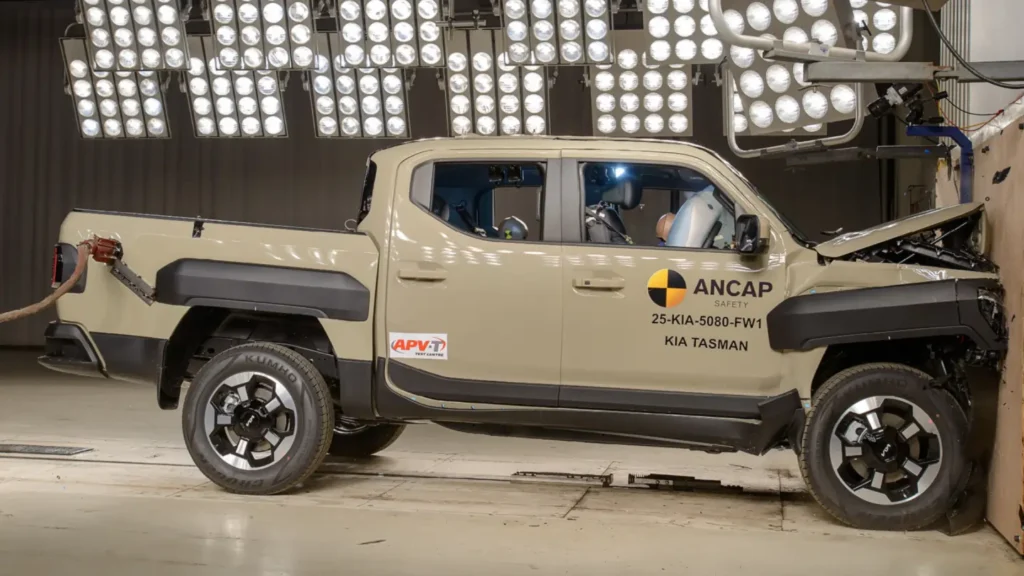
The 2025 Kia Tasman was assessed under ANCAP’s latest 2023–2025 testing protocols and performed strongly across all four key areas:
- Adult Occupant Protection: 85%
- Child Occupant Protection: 85%
- Vulnerable Road User Protection: 74%
- Safety Assist: 80%
Let’s take a closer look at how the Tasman scored in each category:
Adult Occupant Protection – 85% (34.14 out of 40)
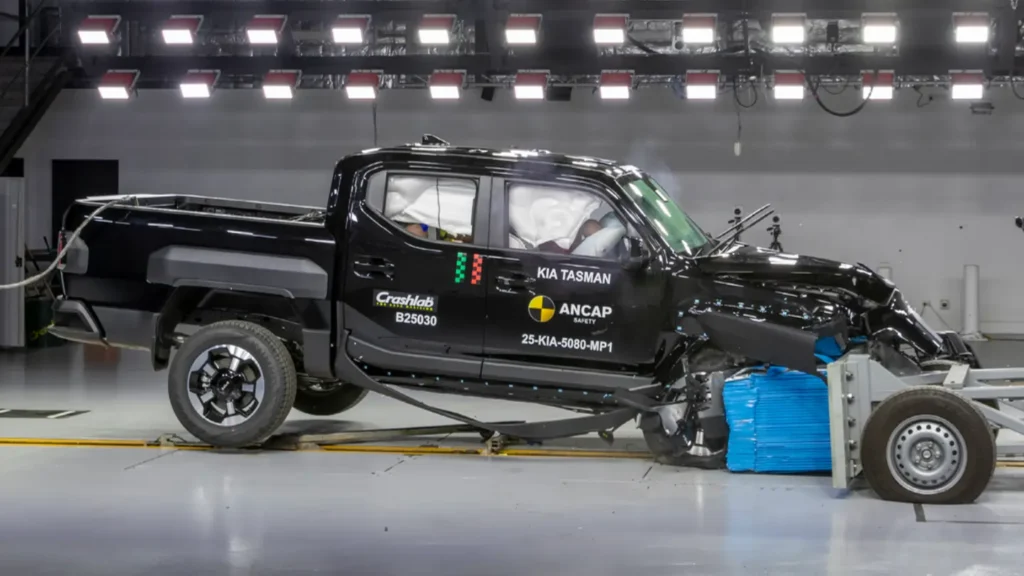
The Kia Tasman scored well in adult occupant protection. In the frontal offset test, it received 5.77 out of 8, and in the full-width frontal test, it scored 6.38 out of 8. While offering good protection to most areas, the upper leg score was rated as poor as the dummy’s pelvis slipped beneath the lap section of the seatbelt.
The side impact and oblique pole crash tests returned 6.00 and 4.61 out of 6, respectively. Far-side impact protection was rated at 4.00 out of 4, supported by the inclusion of a centre airbag. Whiplash protection in the front seats was scored at 3.00 out of 4, while the rear achieved only 0.38 out of 4, indicating limited protection for rear occupants. The Tasman achieved a full 4.00 out of 4 for rescue and extrication, reflecting effective design features to aid first responders.
Child Occupant Protection – 85% (41.86 out of 49)
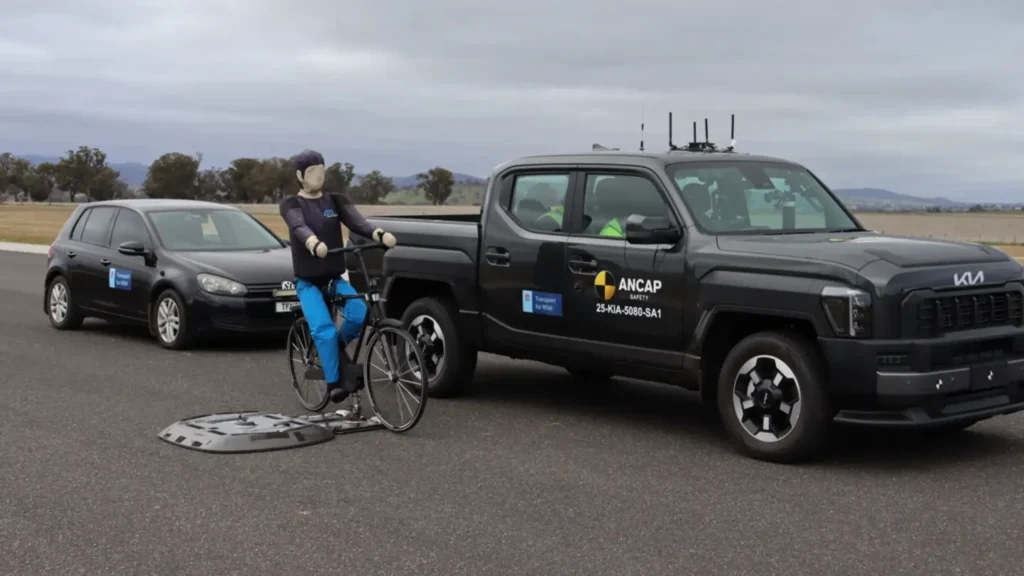
The Tasman performed equally well for child occupant protection. It recorded full marks in both dynamic frontal (16.00/16) and dynamic side impact (8.00/8) tests. For child restraint installation, it received 10.86 out of 12, showing that most commonly available restraints can be correctly fitted in the rear outboard seats. The on-board safety features category contributed only 7.00 out of 13, with some deductions related to the lack of a top tether anchorage in the centre rear seat position, which makes it unsuitable for child restraint use.
Vulnerable Road User Protection – 74% (46.82 out of 63)
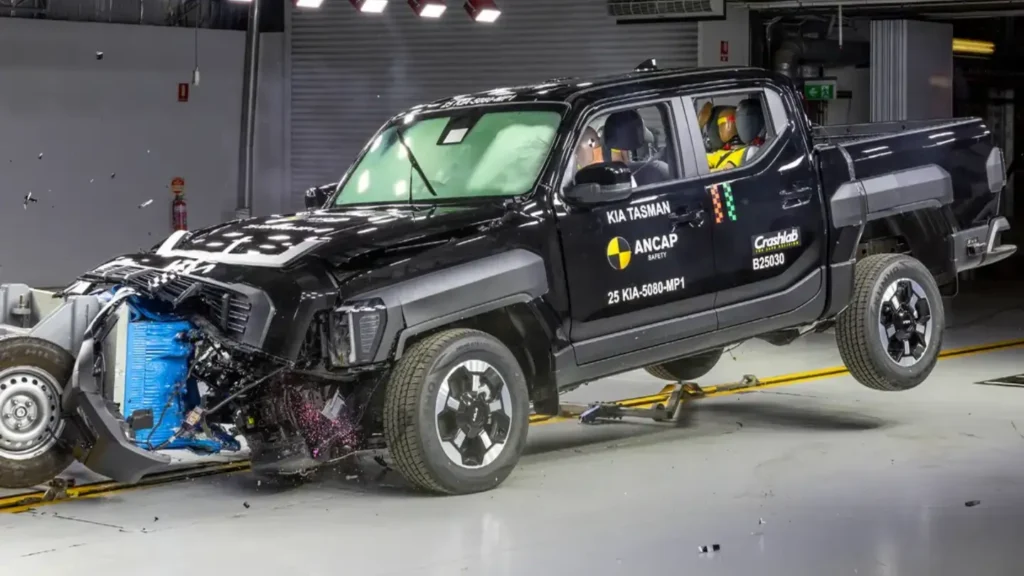
This is where most utes struggle to score well due to their rugged and upright designs, but the Tasman received a decent 74% for vulnerable road user protection. In head protection assessments for adults, children, and cyclists, it scored 9.14 out of 12, while femur protection was rated at 4.50 out of 6 and pelvis protection at 4.34 out of 6. Knee and tibia protection scored 7.58 out of 9. In active safety tests, the Tasman’s AEB for forward-moving pedestrians scored 5.21 out of 9, while AEB for backover scenarios was not available on the base variant and received 0.00 out of 2. AEB Cyclist performance was rated 7.05 out of 9, and AEB Motorcycle achieved 6.00 out of 6. The Lane Support System’s (LSS) motorcycle response added 3.00 out of 4.
Safety Assist – 80% (14.42 out of 18)
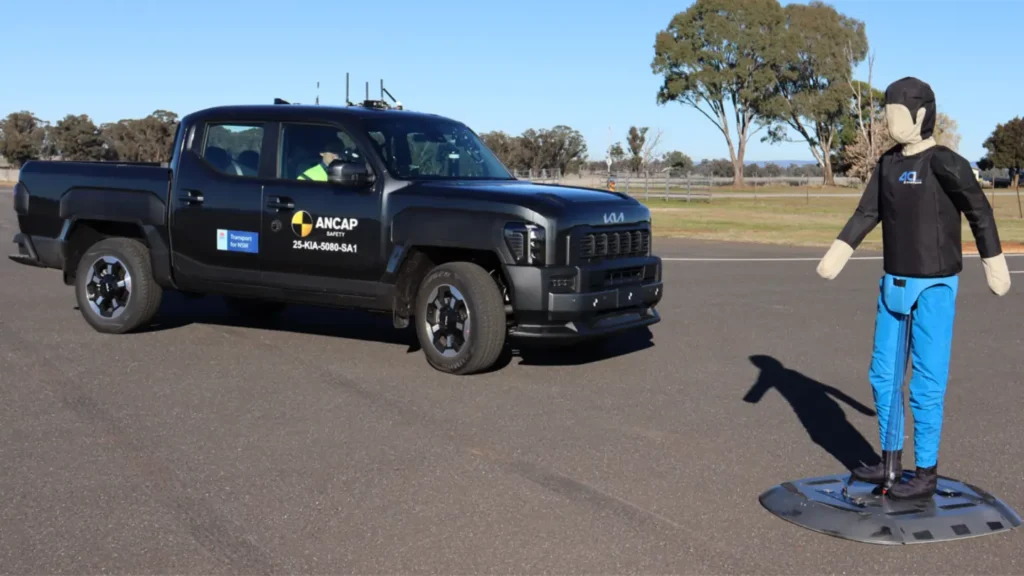
In safety assist testing, the Kia Tasman earned 14.42 points out of 18. Seat belt reminders scored 0.67 out of 2, reflecting limited coverage beyond the front seats. The driver monitoring system achieved 1.50 out of 2, and the speed assistance system returned 2.73 out of 3. The vehicle’s autonomous emergency braking systems performed well across several categories: Car-to-Car front-to-rear earned 3.71 out of 4, junction assist and crossing scenarios scored 2.19 out of 2, and head-on collisions earned 0.88 out of 1. The Lane Support System, which includes lane keep assist and emergency lane keeping, received a rating of 2.75 out of 3.
What does ANCAP say about this result?
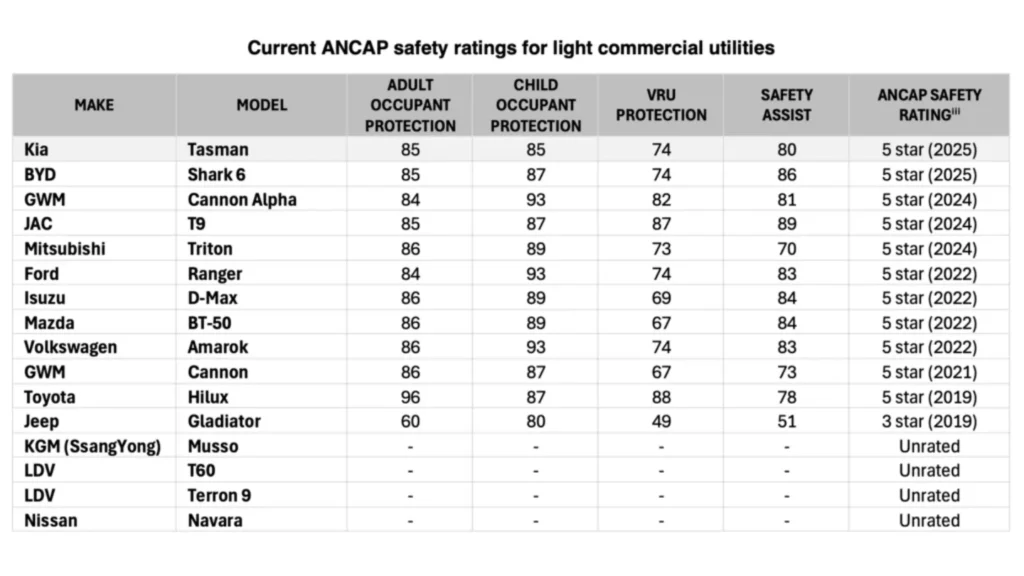
With four out of the top five best-selling vehicles in June 2025 being dual-cab utes, the segment’s dominance is undeniable. According to Federal Chamber of Automotive Industries data, light commercial vehicles accounted for 25.3% of new car sales that month alone.
ANCAP CEO Carla Hoorweg welcomed the Tasman’s result, stating,
“Fleet buyers and potential Tasman customers across the country have been eagerly awaiting the Tasman’s safety rating, and this five-star result will be welcome news.”
She added that the growing popularity of utes, both for work and family use, means safety cannot be overlooked:
“It’s pleasing to see manufacturers continuing to prioritise safety in this segment.”
She also encouraged buyers to regularly consult the ANCAP website when shopping for new vehicles, especially as more new contenders enter the dual-cab space in the coming months.
Who should consider the Kia Tasman?
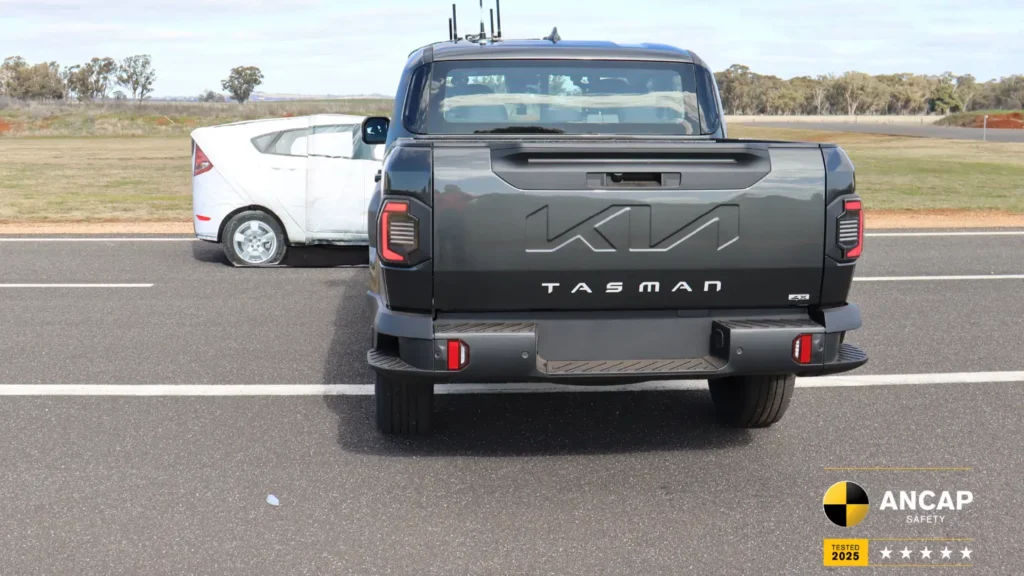
- Families: The Tasman offers strong protection for both adults and kids, with a five-star ANCAP safety rating. It’s a solid option for everyday driving and school runs.
- Fleet buyers: With high safety assist scores and features like driver monitoring and lane support, it’s well-suited for high-use business fleets. Safety-focused buyers will appreciate its reliability on the road.
- Tradies and lifestyle users: The 4×4 dual cab setup makes it a practical choice for workdays and weekend getaways. It strikes a balance between rugged utility and modern safety technology.
A quick note, X-Line, X-Pro, 4×2, and cab-chassis variants haven’t been rated by ANCAP yet. If you’re eyeing those, it’s worth keeping an eye out for future updates.
Final thoughts
The Kia Tasman’s five-star ANCAP rating is backed by solid scores in all categories. Standout strengths include side impact protection, child safety in the event of a crash, and driver assistance technology. Some room for improvement remains in rear whiplash protection and vulnerable road user safety, particularly reverse AEB. The five-star ANCAP safety rating makes the Kia Tasman more appealing.
Still, for Kia’s first foray into the ute market, the Tasman sets a high benchmark in safety, especially among a buyer group that includes both families and fleet operators.
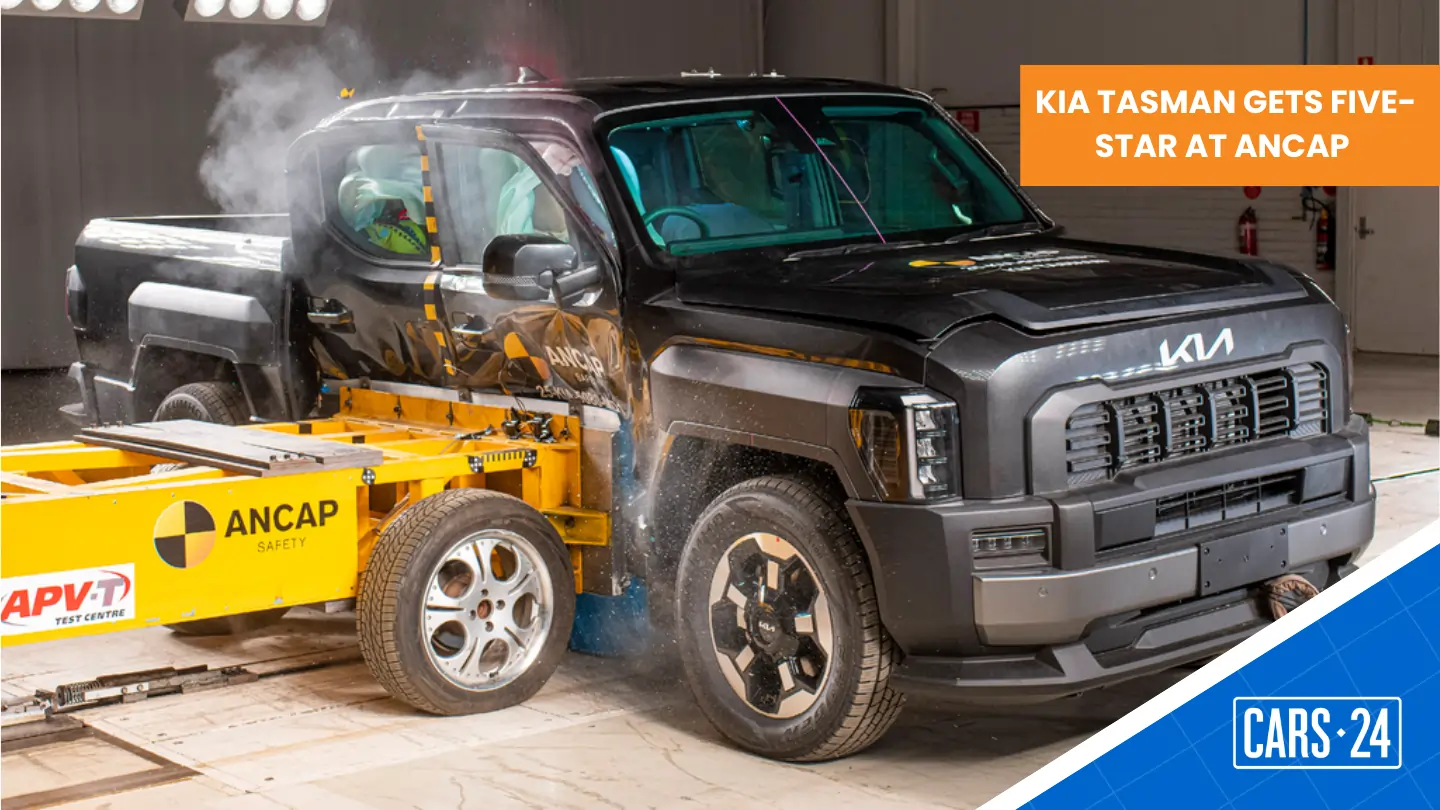
Comments
New Comment